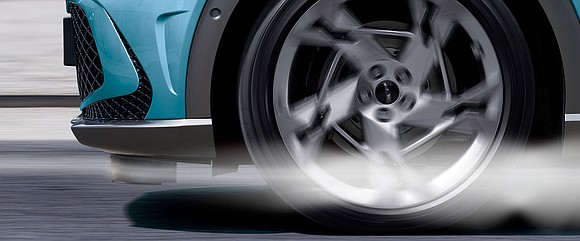Hyundai and Kia Unveil Groundbreaking 'Active Air Skirt' Technology for Enhanced Electric Vehicle Performance
Pioneering Aerodynamic Innovation to Boost Driving Range and Stability in EVs
Francis Page Jr. | 1/23/2024, 10:32 a.m.
In a groundbreaking announcement, Hyundai Motor Company and Kia Corporation have revealed the innovative 'Active Air Skirt' (AAS) technology, designed to minimize aerodynamic resistance during high-speed driving, thereby enhancing the driving range and stability of electric vehicles (EVs).
AAS operates by controlling the airflow entering through the lower part of the bumper, effectively managing turbulence generated around the vehicle wheels based on variable adjustments according to the vehicle's speed during high-speed driving.
In the fiercely competitive era of electric vehicles, where maximizing driving range from a single charge is paramount, the relationship between vehicles and aerodynamics becomes increasingly crucial. Aerodynamic performance not only impacts power performance but also influences driving stability and wind noise.
AAS is strategically positioned between the front bumper and the front wheels, remaining hidden during normal operation and activating at speeds over 80 km/h when aerodynamic resistance surpasses rolling resistance. It retracts again at 70 km/h to prevent frequent operation in specific speed ranges.
The unique design of AAS, covering only the front part of the tires without fully encapsulating the front, is attributed to the characteristics of Hyundai Motor Group's E-GMP platform for EVs. The platform's flat floor enhances aerodynamic performance, effectively improving vehicle downforce, traction, and high-speed stability.
Notably, AAS can operate at speeds exceeding 200 km/h, a testament to the incorporation of rubber material on the lower part, minimizing the risk of external objects splashing and damaging the technology during high-speed driving, ensuring durability.
Hyundai Motor and Kia conducted rigorous tests on the Genesis GV60, successfully reducing the drag coefficient (Cd) by 0.008, resulting in a remarkable 2.8% improvement in drag. This equates to an anticipated additional range improvement of approximately 6 km.
The companies have already applied for related patents in South Korea and the United States, signaling their commitment to advancing this cutting-edge technology. Mass production plans are under consideration pending durability and performance tests.
Sun Hyung Cho, Vice President and Head of Mobility Body Development Group at Hyundai Motor Group, emphasized the technology's potential impact on models like SUVs, where enhancing aerodynamic performance can be challenging. The companies remain dedicated to ongoing improvements in aerodynamics to elevate the driving performance and stability of electric vehicles.
As part of a broader strategy, Hyundai Motor and Kia continue to integrate various technologies, including rear spoilers, active air flaps, wheel air curtains, wheel gap reducers, and separation traps, aiming to secure competitive drag coefficients. The Hyundai IONIQ 6, embodying these innovations, has achieved a global leading Cd of 0.21. Witness the future of electric vehicle performance with Hyundai and Kia's trailblazing Active Air Skirt technology.





